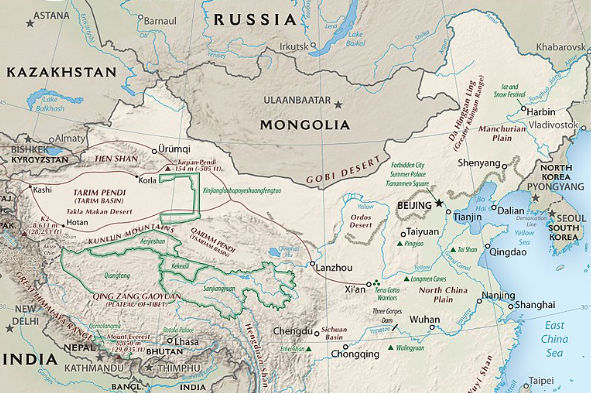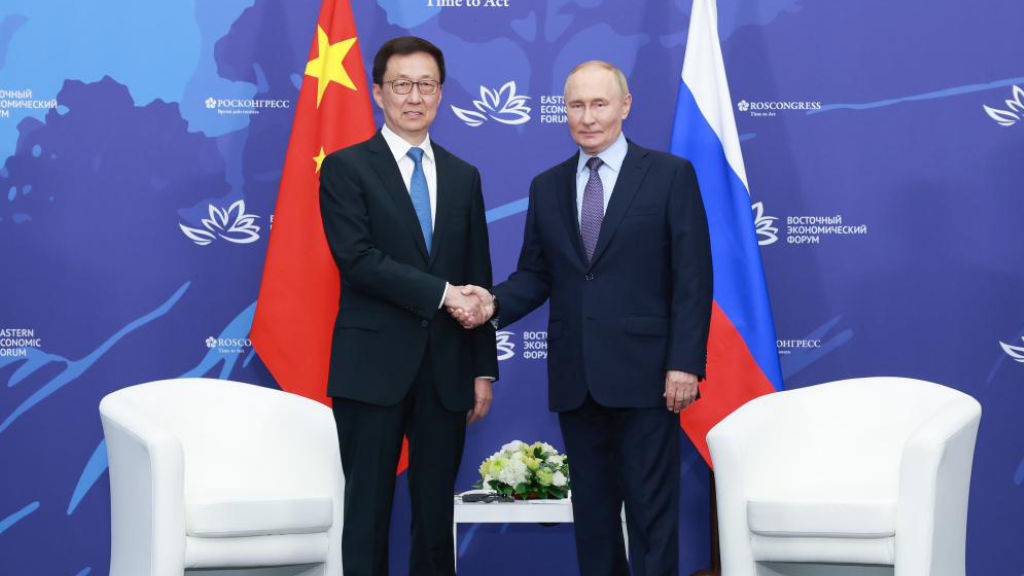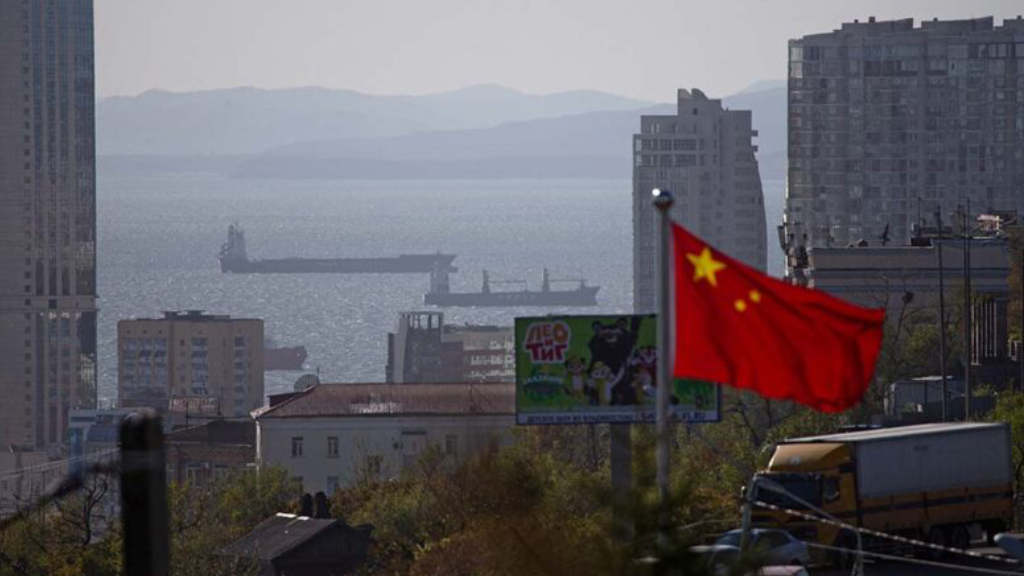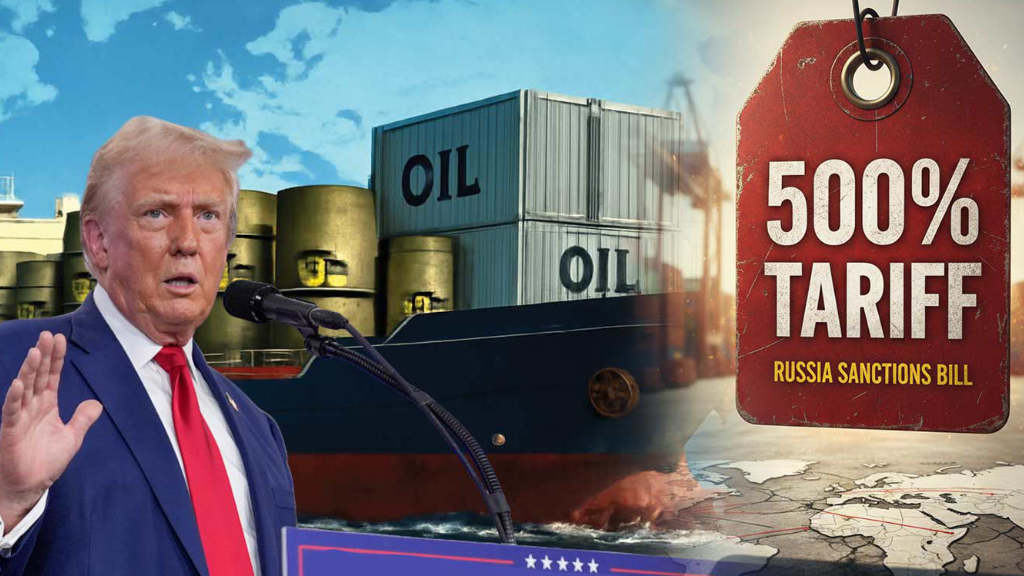Han Zheng, China’s Vice President, has been attending the Eastern Economic Forum in Vladivostok, and gave a speech at the event. China is Russia’s largest trade partner and shares a significant border with the Russian Far East. This is what he had to say:
“Forum participants, ladies and gentlemen, friends. I am happy to be with you at the 9th Eastern Economic Forum. First of all, I would like to convey best regards from President Xi Jinping and the Government of China on the beginning of the forum.
Vladivostok is a window of cooperation with our partners in the Far East. It was at President Putin’s initiative that Vladivostok hosted the first Eastern Economic Forum in 2015. Thanks to its consistent development, it has become an important venue for finding consensus and solutions to development issues.
Its theme this year is Far East 2030. Combining Strengths to Create New Potential, which reflects the current situation and requirements of regional countries. Our shared goal is to promote cooperation and build up mutual trust to the benefit of all.
The Chinese-Russian relations of comprehensive partnership and strategic interaction are growing sustainably in the new age under the strategic guidance of President Xi Jinping and President Putin. This year, our heads of state met in Beijing and Astana, where they set out the plans and parameters of the further development of our bilateral relations and multifaceted cooperation, with the 75th anniversary of our diplomatic relations as a new reference point.
Our two countries have joined efforts to overcome all difficulties in this volatile international situation. We are moving steadfastly on our own path and tackling our problems in order to bring practical benefits to our people and to contribute to the revival and growth of the global economy.

Northeast China and Russia’s Far East are geographic neighbours with close ties between our people. These regions have mutually complementing advantages in trade, investment, energy and transport connectivity, and so they are natural partners.
China has been the largest trade partner and source of foreign investment in the [Russian] Far East for years. Trade between China and the Far East reached US$33.8 billion in 2023, an increase of 54%.
Currently, China’s Northeast is comprehensively cultivating a new frontier of China’s openness to the outside world, which is in line with Russia’s Far East development strategy. The leaders of our two countries attach great importance to cooperation between China’s Northeast and the Russian Far East, and pay personal attention to it.
Given this, we should note the 8th China-Russia EXPO, which was successfully held in Harbin in May. President Xi Jinping sent a congratulatory message to it, and President Putin personally attended it, which served as a strategic guide for bilateral cooperation. The connectivity between the development of these regions and expanding their cooperation is very timely and promising.
We are ready to follow the important agreements at the highest level together with the Russian side, to strengthen interconnectivity at an accelerated pace, both in terms of cross-border infrastructure and harmonisation of the rules and standards, to increase the scale and quality of cooperation, to strengthen the foundation for long-term sustainable development of China-Russia relations in the new era, and to make our contribution to the prosperity and stability of the region and the world.
Against the background of tremendous changes in the international environment unseen in the past century, aspirations for peace, development, cooperation and win-win remain an unstoppable trend. The concept of the Community of Common Destiny for Mankind – the Global Development Initiative, the Global Security Initiative and the Global Civilisation Initiative launched by President Xi Jinping, represent China’s solution to global governance, bring confidence to the world and give impetus to collective efforts to confront challenges and achieve common development.
We stand ready with the countries of the region to consolidate efforts, strengthen cohesion and cooperation, and jointly promote peace, stability, prosperity and development of the entire region. In this regard, I would like to propose the following.
First, it is necessary to adhere to the principles of openness and inclusiveness, which are the leitmotif of the modern world. Cooperation in the spirit of openness is the trend of the era. China unswervingly pursues the strategy of openness with a focus on mutual benefit and win-win, promotes development of an open world economy, opposes protectionism and attempts to disrupt and break chains. It stands against unilateral sanctions and increased pressure. We are ready to build up and enhance cohesion with the countries of the region based on the principles of openness, justice and mutual respect and seek joint development.
Second, we should promote mutually beneficial cooperation. It is a major development driver in the region. The unique resources and high complementarity of Northeast Asian economies are the foundation for broad cooperation prospects. We should actively search for new points of the convergence of interests, highlighting our advantages, acting jointly to protect our stable and smoothly operating value chains, and strengthening our interaction in the new sectors such as artificial intelligence, the digital economy and green economy to the benefit of the cooperative development of regional countries.
Third, we should ensure comprehensive development and security. Security is an earnest of development, and development is a guarantee of security. China is firmly committed to worldwide peace, is stimulating global development and is resolutely opposing hegemonism and all manifestations of the position-of-strength policy, the Cold War mentality, interference in the internal affairs of other countries and double standards.
Ensuring peace and stability, which have been maintained in Northeast Asia by and large, is anything but simple. We are ready to join efforts with all parties to stimulate dialogue and exchanges and to build up mutual understanding for protecting regional security in the long term.
During the recent third plenary session of the 20th Central Committee of the Communist Party of China, we set forth an ambitious plan for the comprehensive deepening of reforms and promoting China’s modernisation. Our modernisation is proceeding on the path of peaceful development and is benefitting the entire world. China will continue to promote high-quality development and high-level openness, offering new possibilities for the region and the world through the example of its development.
We are ready to join efforts with our partners to promote global modernisation, are focused on peaceful development, mutually beneficial cooperation and global wellbeing, and we are ready to contribute to the modernisation of our region and the world as a whole.
In conclusion I would like to wish fruitful work to the forum participants.”
Summary
Han Zheng’s speech didn’t elaborate on recent China-Russia developments beyond those which are already well known. However, he did highlight the regional trade development, which has shown a significant border trade increase between China and the Russian Far East of 54% last year, reaching US$33.8 billion. This is a significant amount, and indicates that the Russian Far East is now responsible for about 15% of all China-Russian trade (US$240 billion in 2023). The Russian Far East also appears to be the fastest growing region of Russia in terms of bilateral commerce.
This can growth trend can be expected to prevail. Regional border crossings have been improved, with greater capacity and the digitisation of customs and issues also speeding up effectiveness and physical throughput. A recent decision to allow easier administration procedures for Chinese and Russian truck drivers to obtain entry visas will be a motivating factor.
Another investment issue to look out for is Chinese regional investment into the Russian Far East. The average salary for a worker in Harbin, China’s largest city close to the Russian border and the capital of its Heilongjiang Province, is now about US$21,000, or an hourly rate of about US$10.
In Vladivostok, it is about US$12,600 or an hourly rate of about US$6. Given the price differential and the fact that from early 2025, Russia will be providing tax and other fiscal incentives in the Vladivostok region, it would not be surprising to see Chinese investors reduce operating overheads by making investments into Russia. That manufacturing potential needs to be matched up with the relevant customs duties and tariffs, however a trend for goods available in China, yet marked “Made in Russia” may become a new normal.
For assistance with understanding the Russian and Chinese markets, please email us at info@russiaspivottoasia.com
Further Reading
China Suppliers Sending Russian Market Goods Via Third Party Countries





